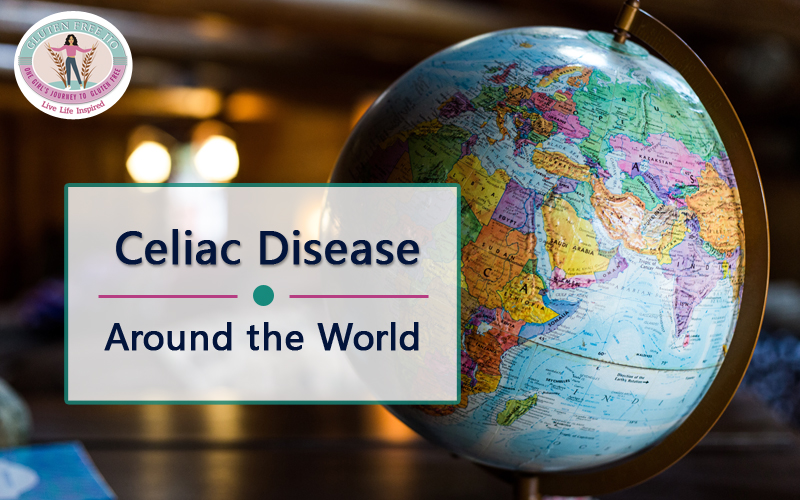Celiac Disease Around The World

About Celiac Disease
Celiac Disease is an autoimmune illness that damages the mucosa in the small intestine. It leads to nutrient malabsorption causing several other health complications in a person.
The most direct and immediate trigger for developing this disease is the intake of gluten-rich foods. It is a protein found in wheat, barley, etc. and a known activator of the disease. Naturally, the best way to tackle the illness is by adhering to a gluten-free diet.
Diagnosis
While sticking to such a diet has its challenges, it is the detection of the disease itself that is the biggest hurdle. The symptoms of Celiac can be as common as bloating, constipation, diarrhea, fatigue, etc. This means that very often, the symptoms get treated for themselves and if at all a connection to Celiac is established, it is usually quite delayed.
The only way to confirm Celiac Disease in the body is by a blood test or a biopsy. If a family member has the disease, there is a high probability that you too are a carrier of the HLA gene or the Celiac gene. But for a doctor to prescribe serological, genetic or endoscopy tests, a correlation must be recognized between the symptoms and the disease along with thorough knowledge of family medical history.
Prevalence Around the World
While most cases of Celiac go undiagnosed, it is interesting to observe the prevalence and distribution of Celiac around the world.Even though it was considered to be a disease afflicting Caucasians, more and more reports of Celiac Disease among non-European nationalities are being discovered today. Worldwide, North Africa has the highest prevalence of the disease and Latin America, too, has a significant number of persons suffering from the illness.
An analysis of studies around the world showed that the prevalence of Celiac was about 4% in South America, 0.6% in Asia and 0.8 % in Europe and Australia.
It is said that nearly 1% of the population in the U.S. is diagnosed with the disease. However, due to relatively low dependence on wheat among the Chinese and Southeast Asians, the prevalence of Celiac is low there, though not totally absent. Studies showed that as China and other Asian countries adopt a more western lifestyle, the detection of Celiac is also on the rise. Moving away from other indigenous grains could be a reason for this.
People in countries like Turkey, Egypt, Kuwait, Iran, Israel, Lebanon, are more susceptible to the illness as the diet here involves heavy consumption of wheat bread.
Celiac Among Indians
A research conducted in the U.S. showed that among those diagnosed with Celiac Disease in the country, people hailing from North India and more so, Punjab had the highest rate of developing the disease. A predominantly wheat-based diet could be a reason behind this. The prevalence of the disease was less among those with South Indian heredity.
 MY JOURNEY
MY JOURNEY About Me
About Me Early life
Early life Diagnosis
Diagnosis CELIAC DISEASE
CELIAC DISEASE Symptoms & Diagnosis
Symptoms & Diagnosis Treatment & Follow Up
Treatment & Follow Up GLUTEN - FREE LIVING
GLUTEN - FREE LIVING At Home
At Home At School
At School At Social Events
At Social Events
 Grocery Shopping
Grocery Shopping COMMUNITY OUTREACH
COMMUNITY OUTREACH Gluten Free Meetup
Gluten Free Meetup Workshops
Workshops Webinars
Webinars COVID-19 Camps By Gluten Free Jio
COVID-19 Camps By Gluten Free Jio  Mid Day Meal
Mid Day Meal Beyond Celiac
Beyond Celiac Real Stories of Celiac
Real Stories of Celiac RESOURCES
RESOURCES Restaurant Dining Cards
Restaurant Dining Cards Recipes
Recipes Gluten Free eBook
Gluten Free eBook Gluten Free Jio App
Gluten Free Jio App RECOGNITION
RECOGNITION TRAVEL DIARY
TRAVEL DIARY



